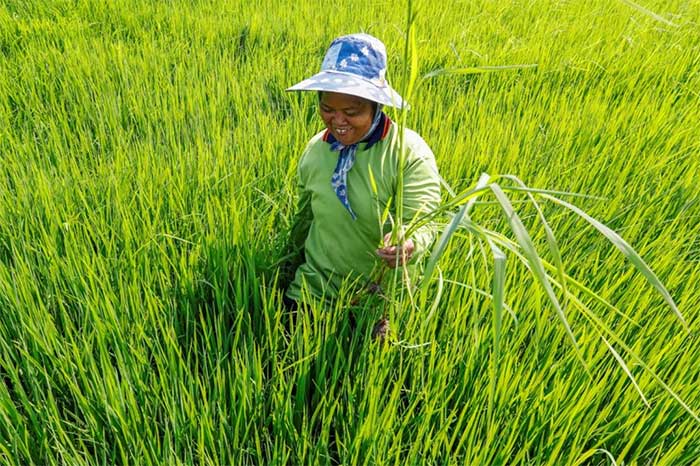A research team from the National Center for Genetic Engineering and Biotechnology (Biotec) has successfully developed a new rice variety named Hom Le Noi, which is capable of withstanding the effects of flooding.
Dr. Theerayut Tuchinda, the acting Deputy Director of Biotec and leader of the research team, stated that they utilized a technique known as “DNA Markers Assisted Breeding” to improve the rice variety.

Thai farmers. (Photo credit: Thai-German Cooperation).
According to him, Hom Le Noi rice can withstand flooding. This rice variety is not sensitive to sunlight, allowing it to grow in various climatic regions. Additionally, it can resist leaf blight and brown planthopper pests.
The project began in 2013 when the research team used the Pathum Thani 1 rice variety as a foundation for their research and development. They then selected the best strains to be cultivated in laboratories for farmers to test in various provinces, including Phatthalung and Songkhla in southern Thailand.
The research team discovered that rice growing around Songkhla Lake in the two southern provinces can reach heights of up to 120 cm.
Dr. Theerayut mentioned that the rice grains cooked from this new variety have a softer texture compared to other strains grown in similar areas.
This new variety also provides stable yields, approximately 900 kg per rai (equivalent to 5.625 tons per hectare) annually, depending on weather conditions. Biotec is currently in the process of registering it under the Plant Variety Protection Act BE 2518 (1975).
The aforementioned research team received support from the Ministry of Higher Education, Science, Research and Innovation, the National Science and Technology Development Agency, the Institute of Agricultural Innovation and Technology Management, the Rice Department, and the Agricultural Research Development Agency of Thailand.


















































